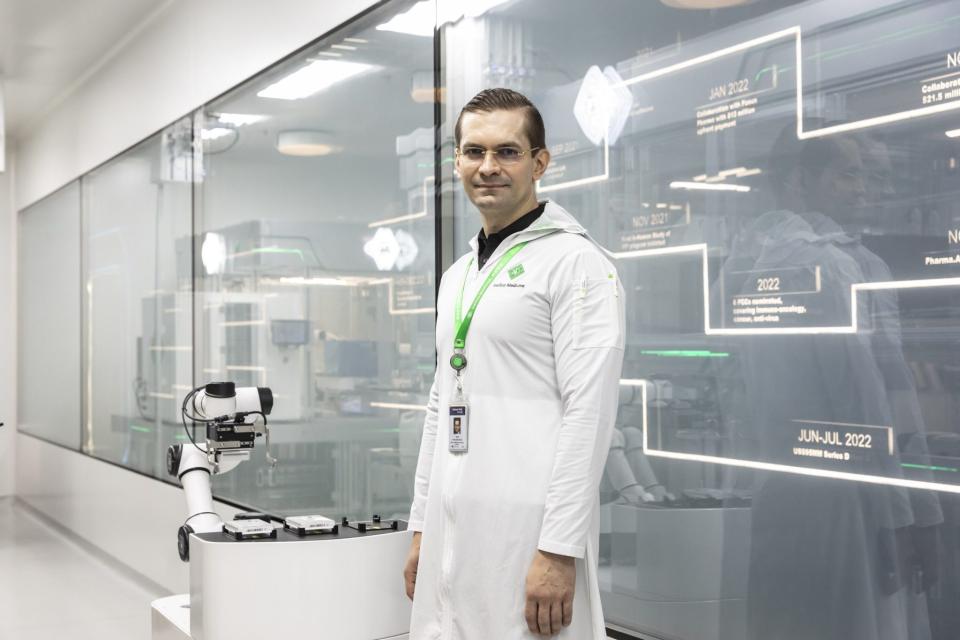How AI turbocharged the development of a new drug and what it might mean for health care

This is Diane Brady, editorial director of the Fortune CEO Initiative, filling in today for Peter Vanham.
As we previously reported in Impact Report, health care is arguably the most exciting and impactful use case for AI. In the past week, we’ve seen a very visible manifestation of that. Insilico Medicine and collaborators published a study in Nature Biotechnology on March 8 that the company’s CEO Alex Zhavoronkov told me is “the most important paper of my career.”
The significance may not jump out from the pages of a peer-reviewed scientific journal. The study is about an experimental drug for idiopathic pulmonary fibrosis, a devastating condition in which the lungs become scarred, making breathing more difficult. Finding a cure is itself an important quest.
What makes this study particularly newsworthy, though, is the fact that the drug, INS018_055, is the first AI-developed drug to reach phase 2 clinical trials. That makes it a real-world test case of the potential for AI to radically lower the cost and time it takes to develop new drugs.
The paper outlines exactly how Insilico researchers deployed AI tools throughout the process, from identifying a target and generating a molecule to block it to the various phases of clinical trials. That means others can learn from the process, Zhavoronkov says, and apply it to their own work. (Raw data from the 13 preclinical experiments and 3 clinical trials referenced in the study can be accessed by visiting Insilico’s data room. The company also used ChatGPT-4 Turbo and internal large language models to create a chatbot that answers questions related to the paper.)
Along with generating headlines, the study caught the eye of Peter Diamandis, who called it “the most comprehensive validation of this technology” on X. It also caught the attention of pundits like Eric Topol, Rory Stewart, and David Sinclair, among others.
Zhavoronkov says it takes about 12 to 20 years to develop a drug and bring it to market, “if you are doing it from scratch.” In this case, the critical stage of identifying and developing a drug took dramatically less time—around 18 months. Insilico has a long way to go, and other hurdles to clear, before its AI-generated drug hits the market, but the potential to speed up the timeline for introducing new medications and other medical breakthroughs is clear. Zhavoronkov’s ultimate goal is to use generative AI in aging research to promote greater longevity, which he’s doing through a spinout that’s developing cell-based biomarkers for aging with the aim of extending human life. Addressing disease is just one part of the equation. Says Zhavoronkov: “I want to promote healthy and productive longevity for everyone.”
More news below.
Diane Brady
Editorial Director, Fortune CEO Initiative
This story was originally featured on Fortune.com

 Yahoo Finance
Yahoo Finance 